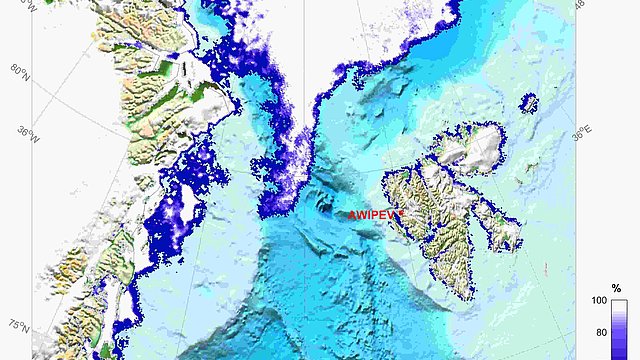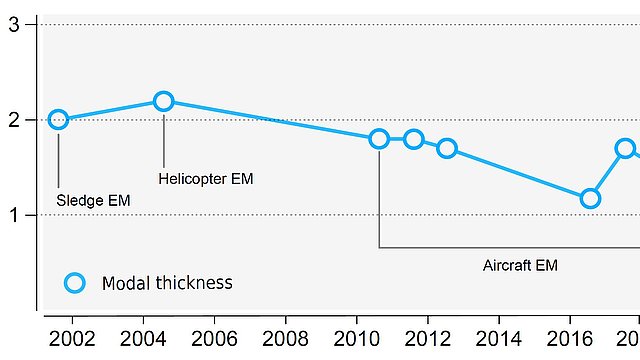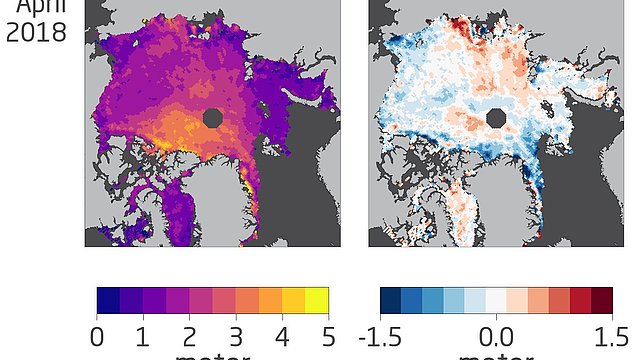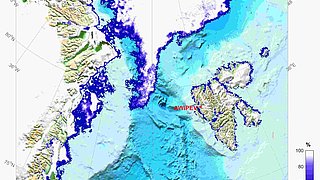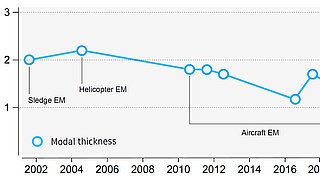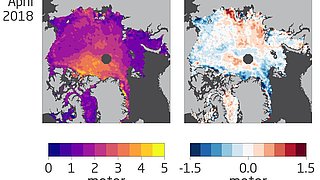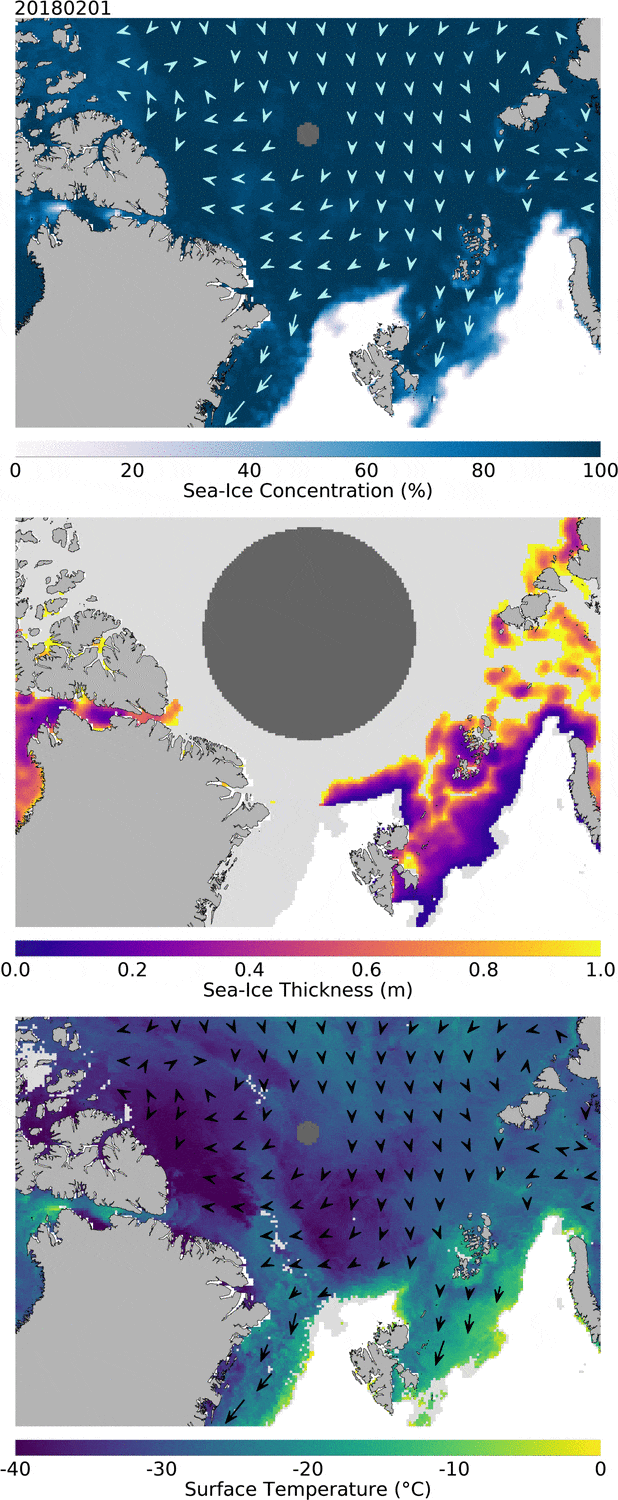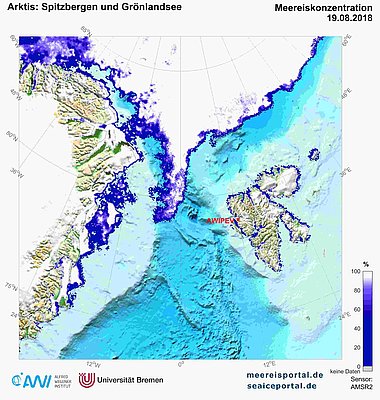In recent days, the development of the ice cover north of Greenland has attracted considerable attention: within a few weeks, an ice-free strip up to 100 km wide has formed along the coast (Fig.1). The Research Vessel Polarstern, which was in the Fram Strait at the time, quickly changed course and seized the opportunity to chart a previously inaccessible region (find more information on the Polarstern Blog).
The ice north of Greenland is particularly thick, several years old and is mainly formed on the Russian continental shelf. The Transpolar Drift – which acts like a transarctic conveyor belt – transports the sea ice over a few years to the coast of Greenland. Here, the onshore drift compresses the pack ice, creating the compact ice cover typical for this region. The following explains which processes are responsible for the formation of ice-free zones north of Greenland in summer, and why the ice concentration was particularly low this year.
Not unusual: offshore winds in summer create open water
In summer, transient offshore winds drive the sea ice away from Greenland’s coast. This leads to the formation of areas of open water, so called polynyas, which rapidly close again when the wind changes direction and blows toward the land. Although such leads along the coast are not uncommon – pronounced channels were observed in August 2007 and the July months of 2014 and 2016 – this summer, particularly large areas north of Greenland were ice free.
Do reductions in the age and thickness of the pack ice north of Greenland make it more mobile?
The extent to which pack ice reacts to changes in the atmospheric drivers depends on how thick it is. A young, relatively thin ice layer is more easily blown away by offshore winds than a solid ice layer that is several years old. Since 2001, the AWI has been using helicopters and aircrafts to measure the thickness of the ice north of Greenland and in the Fram Strait. This year, too, as part of the aircraft-based ASIMBO (Arctic Sea Ice Mass Balance Observatory) campaign, there have been extensive surveys of the ice thickness in the region. The measurements with the EM-Bird confirm that overall, the ice in the region has become significantly thinner, and also younger, making it more mobile (Fig.2). This means that offshore winds were able to create much larger ice-free areas than in the past. This year, the thickness of the ice was ca. 1.5 m, while in 2001 and 2004, thicknesses of over 2 m were measured. This reduction is a result of increasing temperatures in the Arctic.
New ice formation in winter 2018 may have exacerbated the reduced summer ice concentration
Alongside the mechanisms mentioned above, events in winter 2018 may have preconditioned the low ice extent north of Greenland: an inflow of warm air in February 2018 caused the temperatures in northern Greenland to rise above zero for several days (find out more here). Strong offshore winds drove the pack ice away from the coast, leading to a large area of new ice formation (see animation from 1 February to 31 March 2018 at the end of this article, Fig. 3). Ice thickness measurements made with the aircraft in the region in March 2018, together with data from the CryoSat-2 satellites, offer clues to the unusual extent of new ice formation at the end of winter 2018 (Fig. 4. Find out more here). With the onset of summer, these areas were the first to melt, leaving behind a loose collection of older ice floes, which then disintegrated further due to the effects of the atmosphere and the ocean (Fig. 5). In summary, it’s apparent that the anomaly in the ice concentration north of Greenland is the result of various factors interacting, but the inflow of warm air in February 2018 may have had a significant influence.
Contacts
- Dr Thomas Krumpen (AWI)
- Prof Dr Christian Haas (AWI)
- Dr Stefan Hendricks (AWI)
- Dr Robert Ricker (AWI)
- Jan Rhode (AWI)
Questions?
Contact us via E-Mail or our contact form.
Graphics
